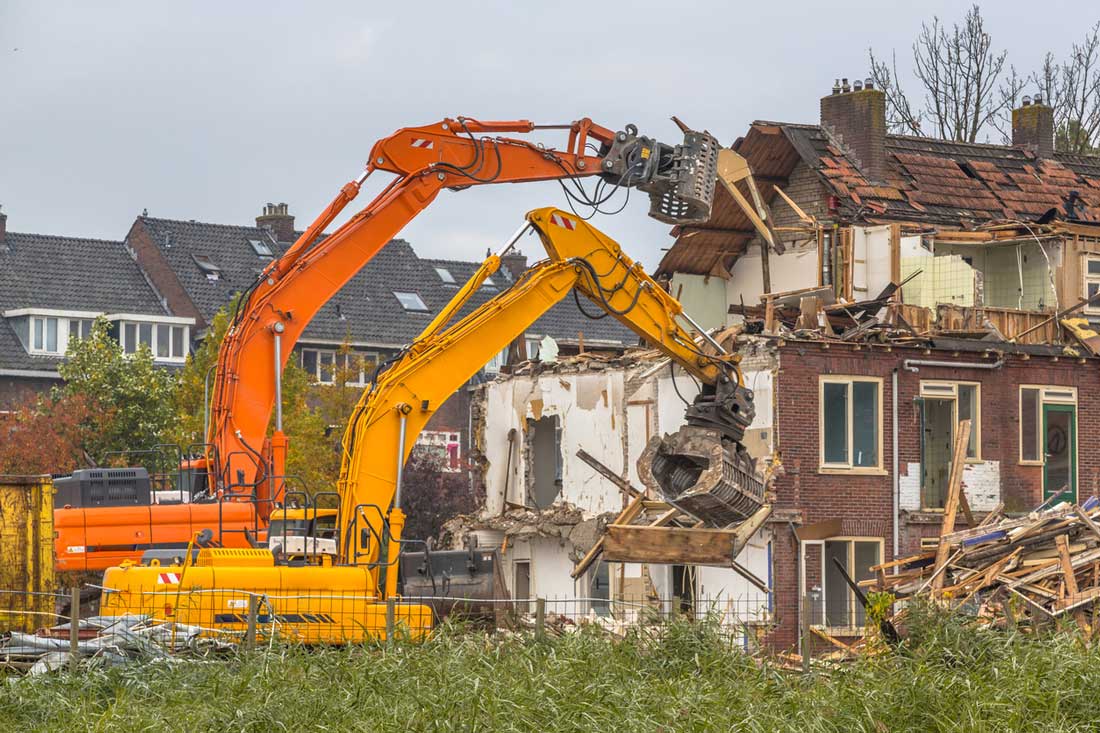
The television images are frightening.
Bulldozers take down homes in a residential neighborhood and the reporter on the scene says the demolition is paving the way for a highway expansion. She mentions the anger of the displaced residents, but the story is more about the enhancing the public good than it is about a legal topic few of us understand called eminent domain.
Eminent domain produces more anxiety than almost any other type of civil case that goes to trial. The anxiety comes from property owners not understanding their legal rights, as well as the foreboding thought of having to leave a community they dearly love.
Let’s start learning about general eminent domain principles. We will dive into more specific facets of eminent domain law in future articles.
The General Concept of Eminent Domain
The rapid expansion of suburbia shined the legal light on eminent domain cases. However, the practice of acquiring private property to improve services for public use has been around as long as there has been private property. Eminent domain is commonly invoked by state and municipal governments that want to obtain private property to widen highways, install power lines, and expand airport runways. The argument for invoking eminent domain is that without the government legal power to acquire property, the public infrastructure would fail to continue to serve the needs of a rapidly growing population.
Eminent domain draws its legal power from federal and state constitutions. Therefore, plaintiffs in eminent domain cases cannot apply constitutional principles to argue against the eminent domain actions taken by state and federal governments.
How Does the Government Take Property?
Eminent domain law requires the taking authority to compensate private property owners for the acquisition of land, real estate, and property assets. The legal process that initiates discussion of fair compensation is referred to as condemnation. Condemnation represents the one legal eminent domain term that frightens many private property owners the most. The term condemnation does not mean a government agency can walk on your property and slap a condemned notice on your front door. Acquiring authorities must follow a series of steps of which the primary goal is to pay property owners “just compensation.” It is only after lengthy negotiations have failed to reach an agreement on “just compensation” that a judge has the legal power to issue a private property condemnation order.
Valuation
The government entity that wants to invoke eminent domain must use an assessor to determine the value of private property under consideration for acquisition. Appraisers use one of three methods to determine fair market value and after submitting the estimate of fair value, the acquiring authority has the legal right to challenge the government entity’s property value determination. Private property owners often hire appraisers to make their own determination of the value of their properties. After a property owner contests an acquiring authority’s property valuation, the stalemate over property value leads to a condemnation hearing.
Methods Use for Private Property Valuation
The three primary approaches for determining private property value include cost, market, and income. Government entities prefer to use the market approach for residences. The market approach evaluates the fair market value of a home by comparing the sale prices of other similar homes located within the same city and/or county. The cost and income approach work best for commercial properties, especially businesses that generate revenue through the sale of products.
Eminent law varies among the 50 states. However, most states have established the same legal guidelines that determine how to handle eminent domain cases. If you receive a notice of eminent domain, you must contact a real estate attorney to receive advice on how to proceed with your case.

Leave a Reply